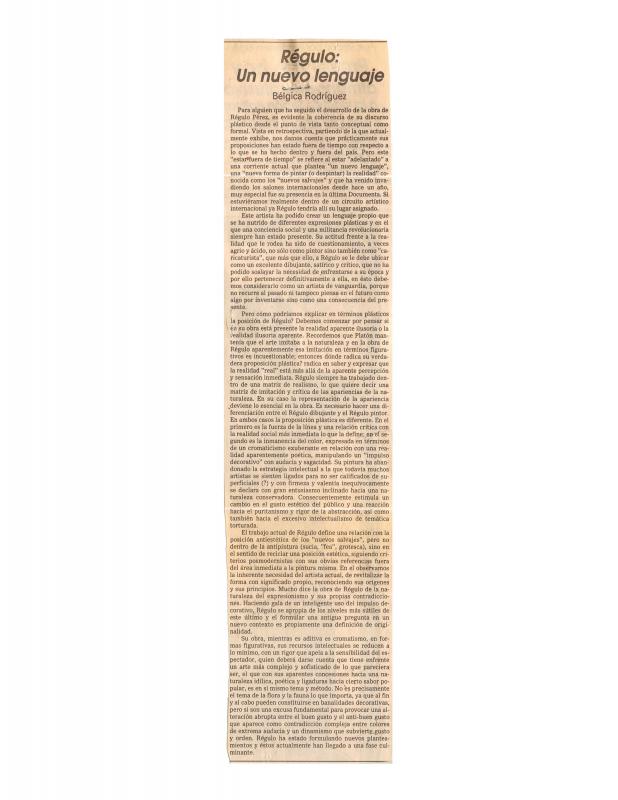In this essay, the Venezuelan art critic Víctor Guédez reviews the work of Régulo Pérez (b. 1929) on the occasion of the latter’s exhibition Flora y fauna at the Museo de Arte Contemporáneo de Caracas in 1982. Guédez explains that only the formal aspects of the work have changed, because the Venezuelan visual artist has simply developed a new alphabet with which to transmit the same protest message that continues to endorse his social commitment, intention, and fundamental goal, which is to reinstate “a different socio-economic-political order.” This aspect of the review is interesting because, although these changes can be clearly seen in Régulo Pérez’s work, Guédez itemizes them expertly and in great depth. The author points out that Régulo Pérez’s new formal vocabulary configures a new visual approach in which the earlier aggressiveness has been replaced by a “lyrical formulation and sensitive recreation.”
In this review, Guédez invites the reader to take a retrospective look at Régulo Pérez’s work, while underscoring the recurring elements in his painting; that is, his “Figurative language” and his protest message.
For more information about Régulo Pérez and his work, see the articles by Rafael Pineda “Régulo y el eje Orinoco – Pintura” [doc. no. 1154220], and “Naturaleza y cultura” (original text taken from the catalogue “Régulo en Acquavella”, Caracas, 1981)” [doc. no. 1154268]; the essay by Bélgica Rodríguez “Régulo: un nuevo lenguaje” [doc. no. 1157776]; and Roberto Guevara’s remarks in “Régulo y la cultura visual” [doc. no. 1157759].




